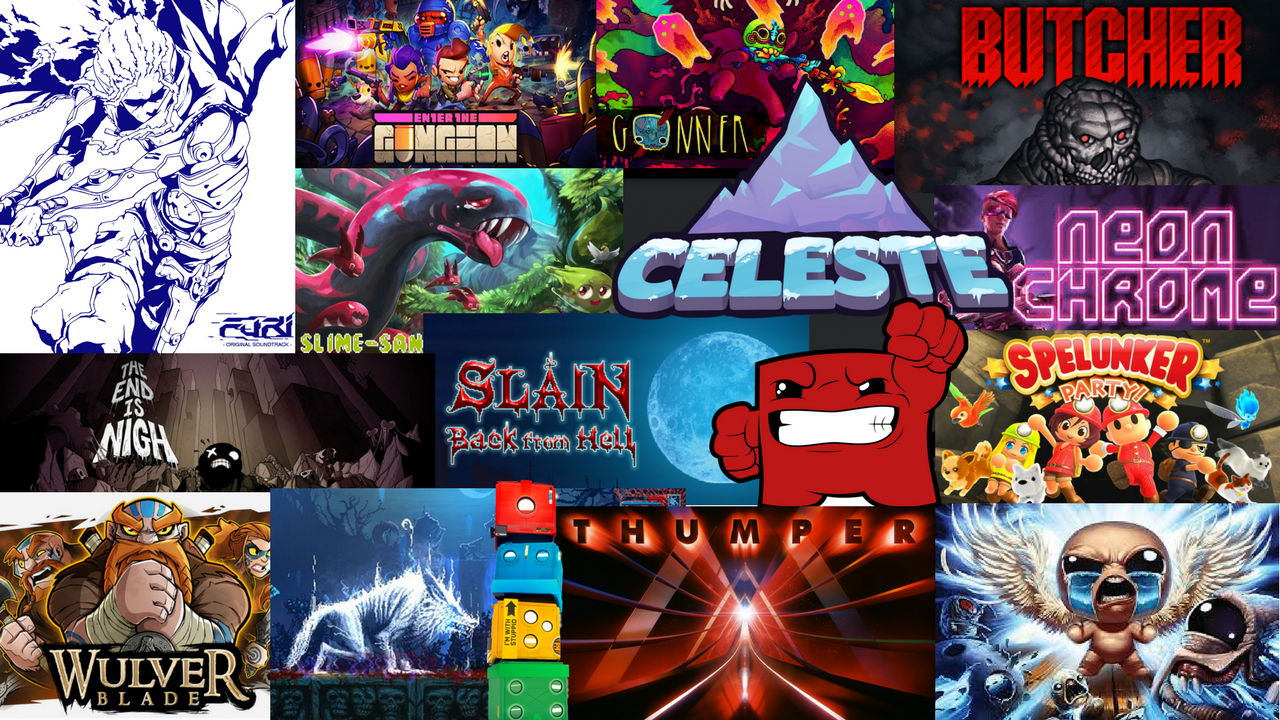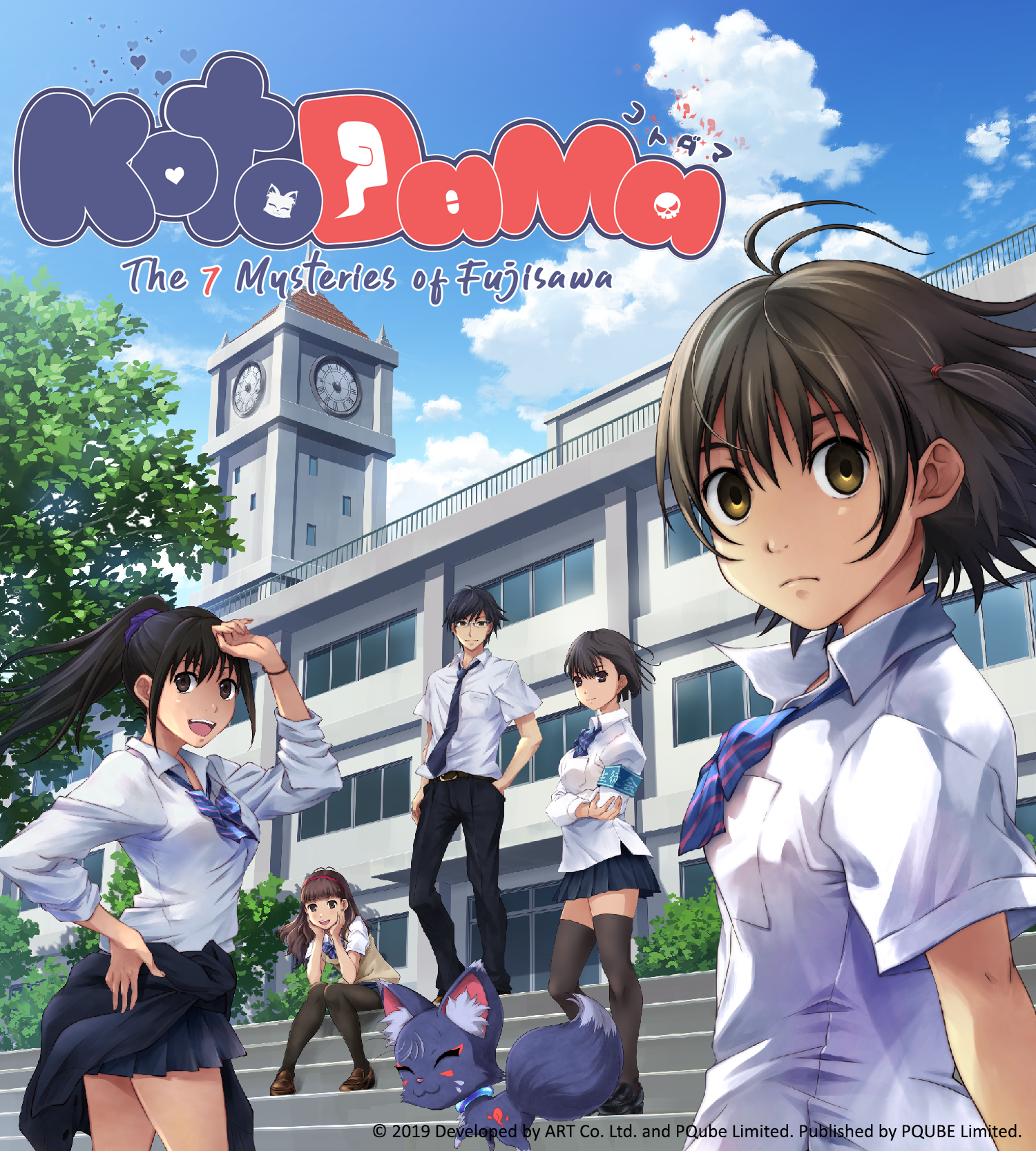Kotodama – The 7 Mysteries of Fujisawa Switch Review by SwitchWatch
Developer: PQube, Art Co., Ltd
Publisher: PQube
[/et_pb_text][/et_pb_column][et_pb_column type=”1_2″][et_pb_text _builder_version=”3.22.7″ text_text_shadow_horizontal_length=”text_text_shadow_style,%91object Object%93″ text_text_shadow_vertical_length=”text_text_shadow_style,%91object Object%93″ text_text_shadow_blur_strength=”text_text_shadow_style,%91object Object%93″ link_text_shadow_horizontal_length=”link_text_shadow_style,%91object Object%93″ link_text_shadow_vertical_length=”link_text_shadow_style,%91object Object%93″ link_text_shadow_blur_strength=”link_text_shadow_style,%91object Object%93″ ul_text_shadow_horizontal_length=”ul_text_shadow_style,%91object Object%93″ ul_text_shadow_vertical_length=”ul_text_shadow_style,%91object Object%93″ ul_text_shadow_blur_strength=”ul_text_shadow_style,%91object Object%93″ ol_text_shadow_horizontal_length=”ol_text_shadow_style,%91object Object%93″ ol_text_shadow_vertical_length=”ol_text_shadow_style,%91object Object%93″ ol_text_shadow_blur_strength=”ol_text_shadow_style,%91object Object%93″ quote_text_shadow_horizontal_length=”quote_text_shadow_style,%91object Object%93″ quote_text_shadow_vertical_length=”quote_text_shadow_style,%91object Object%93″ quote_text_shadow_blur_strength=”quote_text_shadow_style,%91object Object%93″ header_text_shadow_horizontal_length=”header_text_shadow_style,%91object Object%93″ header_text_shadow_vertical_length=”header_text_shadow_style,%91object Object%93″ header_text_shadow_blur_strength=”header_text_shadow_style,%91object Object%93″ header_2_text_shadow_horizontal_length=”header_2_text_shadow_style,%91object Object%93″ header_2_text_shadow_vertical_length=”header_2_text_shadow_style,%91object Object%93″ header_2_text_shadow_blur_strength=”header_2_text_shadow_style,%91object Object%93″ header_3_text_shadow_horizontal_length=”header_3_text_shadow_style,%91object Object%93″ header_3_text_shadow_vertical_length=”header_3_text_shadow_style,%91object Object%93″ header_3_text_shadow_blur_strength=”header_3_text_shadow_style,%91object Object%93″ header_4_text_shadow_horizontal_length=”header_4_text_shadow_style,%91object Object%93″ header_4_text_shadow_vertical_length=”header_4_text_shadow_style,%91object Object%93″ header_4_text_shadow_blur_strength=”header_4_text_shadow_style,%91object Object%93″ header_5_text_shadow_horizontal_length=”header_5_text_shadow_style,%91object Object%93″ header_5_text_shadow_vertical_length=”header_5_text_shadow_style,%91object Object%93″ header_5_text_shadow_blur_strength=”header_5_text_shadow_style,%91object Object%93″ header_6_text_shadow_horizontal_length=”header_6_text_shadow_style,%91object Object%93″ header_6_text_shadow_vertical_length=”header_6_text_shadow_style,%91object Object%93″ header_6_text_shadow_blur_strength=”header_6_text_shadow_style,%91object Object%93″ z_index_tablet=”500″]Release Date: May 31st 2019
Price as of Article: $29.99, £29.99
Game code provided by PQube
Running late as you try to get your bearings on the school, you are a new transfer student at the famous Fujisawa Academy. You quickly run into a peculiar girl, Nanami, who seems to be in a hurry, muttering something about strange sounds on the roof. You later then find your way to your classroom, where you are greeted by your room teacher, who seemingly was also a little late.
Being new around, and having already made acquaintance with Nanami, who it seems is in your class, you are seated next to her and offered a tour of the school. Nanami, you quickly learn, is talkative and highly energetic, and you later find out that she is also one of the two members of the school’s occult research club. At the club, she and her friend Wakaba, tell you about the 7 mysteries of the school, with one of them, which seems to be the one Nanami is the most excentric about, being the Curse of Mikoto, a girl who allegedly jumped from the roof years prior. It is her hope, that by solving the 7 mysteries, she might come closer to solve the biggest one of them all.
Having a soft spot for mysteries, and an unsatiable desire to uncover the truth, your misadventures with Nanami thus begin, running around the school looking for clues to try and solve each of them. Also, who is the demon following you around really? And what even is the connection between Mikoto’s death and the 7 mysteries of the school?
These answers and more will reveal themselves in time, as you go through each of the game’s rather short chapters. Each serving a conclusion to one of the mysteries, while also adding fire to some of the overarching plot points. Can you get to the bottom of all this?
Groundhog Day: The Anime
Now, I am not gonna go into too much spoiler territory, but as someone who was rather bored of the game early on and was just about to put the controller down, I was quite shocked to learn, that beyond the game’s initial rather innocent exterior, it only really opens up and shows its darker nature once you reach the 5th day where a demon tells you that he is not satisfied with the ending you got, and therefore sends you back in time to do everything over again, but this time with an even bigger mystery to solve.
Where in the first cycle your choices (or lack there of) didn’t really matter, this couldn’t be further from the truth upon replay, as your classmates now show their true colours, and it is thus up to you, with your knowledge of the future, to dig ever deeper than before and find out what really happened to Mikoto.
On the surface, Kotodama – The 7 Mysteries of Fujisawa, is a run of the mill visual novel. You just read, follow along, and watch things happen. Occassionally you are presented with a choice of responses to a given situation, in your first playthrough you are mostly only given one (to make sure you are still awake?) but on repeated playthroughs, due to your past knowledge carrying over, you are presented with more, that will have consequences for the overall outcome of the story.
Sometimes the choice just outright doesn’t make any sense, like on several occasions where I am told that it is up to me whether I want to use my powers or not, only to seconds later only be given the choice to do so. Don’t tease me when there really is no choice.
But I digress, as stated before, the game on the surface is a mystery visual novel, but it is also part puzzle game. You see, your character has made a pact with this demon cat, named Mon-chan, giving him a power called ”Kotodama” which the game translates as ”The Power of Words”. Sometimes you will need to drag the truth out of people. Think of the Psych-Locks in Ace Attorney. But unlike Ace Attorney, where you would ask deeply personal questions to your suspect, here you are taken to a puzzle mini-game in the vein of Bejeweled or HuniePop in a rift dimension.

Here you must reveal the truth by, as Mon-chan puts it, peeling it off layer by layer. The puzzles consist of a board with emblems of various colour/attribute each person you use your power on throughout the game will have a preference, and you must then perform combos by matching three, to take their clothes off and eventually fill their Happy-meter.
Honestly, I don’t know if the shamelessly sexy aspect of this mini-game is just that, because sex sells and the Japanese often are very blatant about this in videogames as we can clearly see in games like Dead or Alive Xtreme 3, Omega Labyrinth Z, and Panty Party, or if it is supposed to be symbolic that ”you are most vulnerable and most honest when you are naked and have nothing to hide”?
Regardless, three-by-three matching puzzles are nothing new in videogames, but how this one works, is that you pick among any of the orbs on the board, and this one will then be moved up to the top, making every orb above it drop. It is thus your goal to make sure they drop in a way that causes multiple combos… and I am astoundingly bad at that kind of foresight. Give me Tetris any day where you just have to worry about the task at hand and stack blocks while you make sure no gaps are left open, but games like Puyo Puyo, Pokémon Puzzle League and this one, where you must be good at thinking ahead, multiple steps in advance, I can’t do that..
This, however, wasn’t gonna be a big of an obstacle as I had thought, as even the simplest of combos will often cause an avalanche of combos to come raining down on your target. Unless you get really unlucky with the randomly generated board, you won’t lose as long as you put just a bit of effort into it. Also, if a combo you perhaps haven’t spotted is available, the game will point this out to you by shaking the orb you should choose. Sometimes it doesn’t carry very far, so it is not like the game plays itself, while other times it results in a neat little chain reaction.
Sometimes, when you perform well, you will even summon bonus items to help you in a time of crisis, like a bundle of dynamite that when tapped eradicates all orbs horizontally and vertically to it, a roulette that removes any one of the five attributes and damages your target accordingly, a double arrow that doubles your damage output for 3 turns, and a lock that freezes your move counter temporarily. Right, it should be mentioned that like in HuniePop you only have a set amount of moves before you get a Game Over and are set back to your last save (so save often or at least before every puzzle), but you can accumulate more time by filling the Happy-meter. Also, when you are down to your last 5 moves, the board will begin to shake to give you a heads-up.

Every combo made with your target’s prefered attribute, also fills your star-meter that allows you to take on various ”challenges”. If these are performed satisfactory to your target, you will be rewarded more turns to go on. If not, they will become annoyed with you and cause any number of inconveniences to you, depending on which of the game’s 7 main characters you are dealing with, like Honoka who re-shuffles the entire board, Shuji who turns some of the orbs into skull orbs, or Wakaba who puts a shield up that you will need to break before you can continue to fill her meter, just to name a few. There is even one of the characters who will decrease the Happy-meter if annoyed, but in turn, taking these challenges doesn’t cost you any turns, so it becomes a kind of risk vs reward system.
When you have ”peeled all the layers off the truth” you are taken back to the real world, where the story progresses as normal and your target spills their beans. After you beat them, these puzzle sequences are also added to the ”Fantasize Mode” that you can access via the ”Puzzle” shortcut that is for some odd reason located awkwardly tacked onto the main menu, instead of being in the in-game menu where you find everything else like; ”Word Book”, ”Collection”, ”Tips”, ”Quacker”, ”Save” and ”Load”.
“Kotodama”, as previously mentioned, is the power of words, and sometimes, you will come across certain highlighted words or whole phrases when you converse with the various students at the school. These are then recorded in your super secret notebook, and each serve to upgrade your 5 attributes with points up to level 3. During your first run where your choices are very limited or outright non-exiting, half of these magic words will just be served to you on a silverplate, but when time loops and you are given not only more freedom to explore, but also more dialogue choices, gathering the other half of the vocabulary to complete and fully upgrade your Word Book, becomes somewhat of a challenge, but also nothing too cumbersome as long as you pay attention.
I do find it a bit peculiar how locations disappear after your have been there, but I guess this was done to let you keep track of where you have been and what places you still have yet to visit.
After your first run, when the game truly opens up, certain dialogue choices will even reward you with so-called SP Words. These are special rainbow coloured orbs that each correspond to one of the 7 main characters, and makes fighting them again on repeated playthroughs faster and easier, as making a combo with an SP Word does massive damage. Don’t lose your cool though, you can still lose if you are not careful!
Now about that menu, ”Collection” is where you will find voice clips, graphics, and sound effects that you have come across on your journey, ”Tips” is a list of info on the various students you have met and descriptions of the info you have gathered and should therefore be called “Info” instead, ”Save/Load” says itself, and ”Quacker” is basically the in-game version of Twitter only in a heavily simplified version where you yourself can’t post. Occassionally a duck icon will appear in the top left corner of the screen, indicating someone has posted something new, that you can then go and check. Paying notice to what is posted on Quacker is often important for certain events to trigger, or to let you know where you should be going first.
Should you forget to save and be thrown a ways back, the game thankfully has a fast forward function, that automatically stops whenever you are given a choice, with the choice the game remembers you chose last time being dimmed. Also, some previously selected answers will be grey, while others are either red or blue, and I have admittedly yet to figure out the significance.

Regardless, if you bought this game after watching the trailer, you are most likely here for the sexy HuniePop puzzle mini-games, and I suspect they are what will draw most people in. Also seeing as they are the only bits of actual gameplay. And although I find the nudity part slightly unnecessary (but ultimately inoffensive), this is not a bad thing at all, as they are honestly really fun and addicting. No, I am not saying this because I learned to like them after so many repeated playthrough, no they are legitimately fun, and causing tidal waves of combos to take out your target in a flash is always so satisfying to pull off. You can also just replay them to your heart’s content in the previously mentioned Fantasize Mode and try to improve you time, where you can also unlock different sets of underwear for your favorite waifu/husbando.
Collecting words and seeing your Kotodama power grow as you level up your attributes, is honestly really fun and gives you a nice sense of progression as you aim to fill out the whole list for each of the game’s 7 chapters. Gotta read ’em all!
The audio in Kotodama – The 7 Mysteries of Fujisawa, is fine. It won’t win soundtrack of the year any time soon, or be remembered as fondly for its moments or audio cues as Ace Attorney, but it serves its purpose and lends to the atmosphere well enough. Especially a certain eerie track that always plays when something unsettling is going on will really get under your skin.
Would it have killed them though, to have music on the title screen?
The game is also fully voiced in Japanese, and whenever you peel more clothes off of the girls or guy who fall victim to your truth deciphering power, they let out high pitched moans to express their satisfaction. Pro tip, play in handheld mode with headphones on and try not to let your blushing give you away – unless you are like me and live with your brother who is just as much of a geek as you and couldn’t care less how many anime girl moans comes from your room.
Like any self-respecting visual novel, Kotodama also of course comes packed with a logbook, easily accessible at any time via the X button, where you can keep track of the dialogue, and a cool feature here is that a push of the A button also allows you to replay a dialogue’s voice clip. Unnecessary, but a neat little quality of life detail.
Why is Ace Attorney, even the old ones back on the GameBoy Advance, the only example of a visual novel I can think of, where the developer bothers to animate the characters? I know that being stiff as a board, only having 1-3 emotions to shuffle between, and perhaps even flap your lips to indicate speech, is a low budget staple of the genre, but that doesn’t mean I should let it pass. Just because everyone does something, doesn’t make it acceptable.
They do go the extra mile in Kotodama by having the characters both blink and have sparkles in their eyes to make them seem more alive, and to be fair they do have a fair amount of expressive cardboard cut-outs to shuffle between, but when I have been spoiled by Capcom’s hit franchise and its more fluent animations and model transitions, I can’t help being bothered by how seemingly little effort goes into 95% of all other games in the genre.
I know that less important characters are also often given less detail in these games, but in Kotodama it is very apparent. Sometimes you will bump into characters like Male Student 1, Female Student 3, or Classmate 2. These are flat enough as is, but they also don’t even have a randomly generated name to them, and it becomes even more glaring when you often see them in the same scene as one of the main characters who is fully detailed. Other games will compromise by having important characters dress in more colourful or detailed clothing, maybe have a more crazy or just more recognizable hairdo, and then have less important characters dress more blandly, but still keep the level of actual detail.
The fact that the difference between important and non-important characters in Kotodama is so vastly night and day, is quite frankly off putting, distracting, and screams lazy.

A minor nitpick, that even high budget games of the genre suffer from, are grammatical errors. Kotodama is by no means a huge offender on this, it doesn’t happen so often that it breaks immersion and takes you out of the experience, but there are a few small rookie mistakes sprinkled around here and there. In addition to this, some sentences are structured rather weirdly, which makes the presentation overall come off as kinda amateurish. I understand that these games are often made by non-english speakers, or at least people to whom english is not their first language, but many games, especially visual novels, where the dialogue is the bread and butter of the gameplay, could really benefit from more proof reading.
But credit where credit is due. While the game is very light on so called ”CG Cutscenes”, the game has decent writing and does a formidable job at describing the scenery and character actions, like ”Wakaba walked over to the window, looking out on the evening sun with a gaze in her eyes, before turning back to me with a smile on her face” or “Underneath the wide orange sky, I find Nanami standing in the corner with her back towards me. Nanami hears me approaching and turns around”. Elaborate and sometimes downright poetic narration like that is something I can definitely appreciate, especially in a visual novel game where, true to form, the visuals, ironically, are often very limited.
And speaking of limitations, the game does have a neat albeit short opening with catchy j-pop vocals.

Now, once again… from the top!
As mentioned in the story section, the game only really opens up after you make it through the 5th day of the first cycle, and seeing how many dialogue options you suddenly get, to infuence the turn of events, you will naturally want to abuse the neatly featured quick save function to go back and see what the other choice led to. But be extremely cautious of this, as, as of this review, a game breaking glitch will sometimes make you stuck on an infinite loading screen if you attempt to load your quick save file.
With how many time loops you may need to go through before you uncover the truth of Fujisawa Academy, you do not want that to happen. Trust me, nothing is worse than having made so much progress, and having made it almost to the end, only for the infinite stream of yellow polkadots to keep going, and you begin cold sweating as you know this means you will have to start a new game all over again. For you see, the reason this bug is game breaking, is not only does it obviously require you to restart… it also, in most cases, corrupts your file, so that if you attempt to load the file you were playing on from the main menu, you will just be met with the same infinite load screen again.
Speaking as someone who finally saw the true ending after starting a new game 5 times – getting more frustrated each time, but kept going because I am a stubborn bastard – I really hope this issue is fixed soon. I even had the game crash on me once just by using the fast forward function. And one time, after making it to the “normal ending”, I was caught in an infinite re-fight against the final boss, where every time I beat it, the game would just load the battle all over again. Yes, this game has what I qualify as a boss.
Kotodama – The 7 Mysteries of Fujisawa was an unstable mess to complete, like trying to build a house of cards during a storm with your window open, and I still somewhat ask myself why I even bothered, but something within me just refused to accept defeat I guess.
[/et_pb_toggle][et_pb_toggle title=”Value” open=”on” _builder_version=”3.22.7″ use_border_color=”on” text_shadow_horizontal_length=”text_shadow_style,%91object Object%93″ text_shadow_vertical_length=”text_shadow_style,%91object Object%93″ text_shadow_blur_strength=”text_shadow_style,%91object Object%93″ title_text_shadow_horizontal_length=”title_text_shadow_style,%91object Object%93″ title_text_shadow_vertical_length=”title_text_shadow_style,%91object Object%93″ title_text_shadow_blur_strength=”title_text_shadow_style,%91object Object%93″ body_text_shadow_horizontal_length=”body_text_shadow_style,%91object Object%93″ body_text_shadow_vertical_length=”body_text_shadow_style,%91object Object%93″ body_text_shadow_blur_strength=”body_text_shadow_style,%91object Object%93″ z_index_tablet=”500″]Kotodama – The 7 Mysteries of Fujisawa serves you an intriquing mystery novel with likable characters whose true nature and motivation may surprise you – everyone at Fujisawa Academy has something to hide – and tops off the package with an interesting and addicting spin on the match 3 puzzle formula, complete with some eye candy for good measure (for both guys and girls…but mostly guys). While I do find cute anime girls in nightgown adorable, I honestly really liked the puzzle aspect, but I would also lie if I said the Switch’s screenshot button didn’t come in handy on several occasions, haha.
Unfortunately, while I thoroughly enjoyed both the story and the gameplay, I am hard pressed to justify the price of $29.99/£29.99, looking back on just how many glitches I encountered that made my overall experience a super frustrating one, that many times made me glad I don’t really have any neighbours. The Switch is admittedly though, to my knowledge, quite short on match 3 puzzle games, but I still recommend waiting for a sale or at least waiting for PQube to announce when the bugs are fixed.
Until then, Root Letter: Final Answer and Worldend Syndrome, two other visual novels, are both releasing soon, also both getting released by PQube, and they both look pretty promising, with one being an enhanced re-release of a PS4/Vita classic, so I’d say give those a look while you wait for Kotodama to get fixed. When it is, I do ultimately recommend you check it out.
Pros
[/et_pb_text][et_pb_blurb use_icon=”on” font_icon=”%%47%%” icon_color=”#ffffff” use_circle=”on” circle_color=”#5bd999″ icon_placement=”left” _builder_version=”3.22.7″ text_shadow_horizontal_length=”text_shadow_style,%91object Object%93″ text_shadow_vertical_length=”text_shadow_style,%91object Object%93″ text_shadow_blur_strength=”text_shadow_style,%91object Object%93″ header_text_shadow_horizontal_length=”header_text_shadow_style,%91object Object%93″ header_text_shadow_vertical_length=”header_text_shadow_style,%91object Object%93″ header_text_shadow_blur_strength=”header_text_shadow_style,%91object Object%93″ body_text_shadow_horizontal_length=”body_text_shadow_style,%91object Object%93″ body_text_shadow_vertical_length=”body_text_shadow_style,%91object Object%93″ body_text_shadow_blur_strength=”body_text_shadow_style,%91object Object%93″ z_index_tablet=”500″]Good narration
[/et_pb_blurb][et_pb_blurb use_icon=”on” font_icon=”%%47%%” icon_color=”#ffffff” use_circle=”on” circle_color=”#5bd999″ icon_placement=”left” _builder_version=”3.22.7″ text_shadow_horizontal_length=”text_shadow_style,%91object Object%93″ text_shadow_vertical_length=”text_shadow_style,%91object Object%93″ text_shadow_blur_strength=”text_shadow_style,%91object Object%93″ header_text_shadow_horizontal_length=”header_text_shadow_style,%91object Object%93″ header_text_shadow_vertical_length=”header_text_shadow_style,%91object Object%93″ header_text_shadow_blur_strength=”header_text_shadow_style,%91object Object%93″ body_text_shadow_horizontal_length=”body_text_shadow_style,%91object Object%93″ body_text_shadow_vertical_length=”body_text_shadow_style,%91object Object%93″ body_text_shadow_blur_strength=”body_text_shadow_style,%91object Object%93″ z_index_tablet=”500″]Cute girls
Fun puzzles
[/et_pb_blurb][/et_pb_column][et_pb_column type=”1_2″][et_pb_text _builder_version=”3.0.95″]Cons
[/et_pb_text][et_pb_blurb use_icon=”on” font_icon=”%%47%%” icon_color=”#ffffff” use_circle=”on” circle_color=”#e6567a” icon_placement=”left” _builder_version=”3.22.7″ text_shadow_horizontal_length=”text_shadow_style,%91object Object%93″ text_shadow_vertical_length=”text_shadow_style,%91object Object%93″ text_shadow_blur_strength=”text_shadow_style,%91object Object%93″ header_text_shadow_horizontal_length=”header_text_shadow_style,%91object Object%93″ header_text_shadow_vertical_length=”header_text_shadow_style,%91object Object%93″ header_text_shadow_blur_strength=”header_text_shadow_style,%91object Object%93″ body_text_shadow_horizontal_length=”body_text_shadow_style,%91object Object%93″ body_text_shadow_vertical_length=”body_text_shadow_style,%91object Object%93″ body_text_shadow_blur_strength=”body_text_shadow_style,%91object Object%93″ z_index_tablet=”500″]Glitches
Numerous typos
[/et_pb_blurb][/et_pb_column][/et_pb_row][/et_pb_section]









